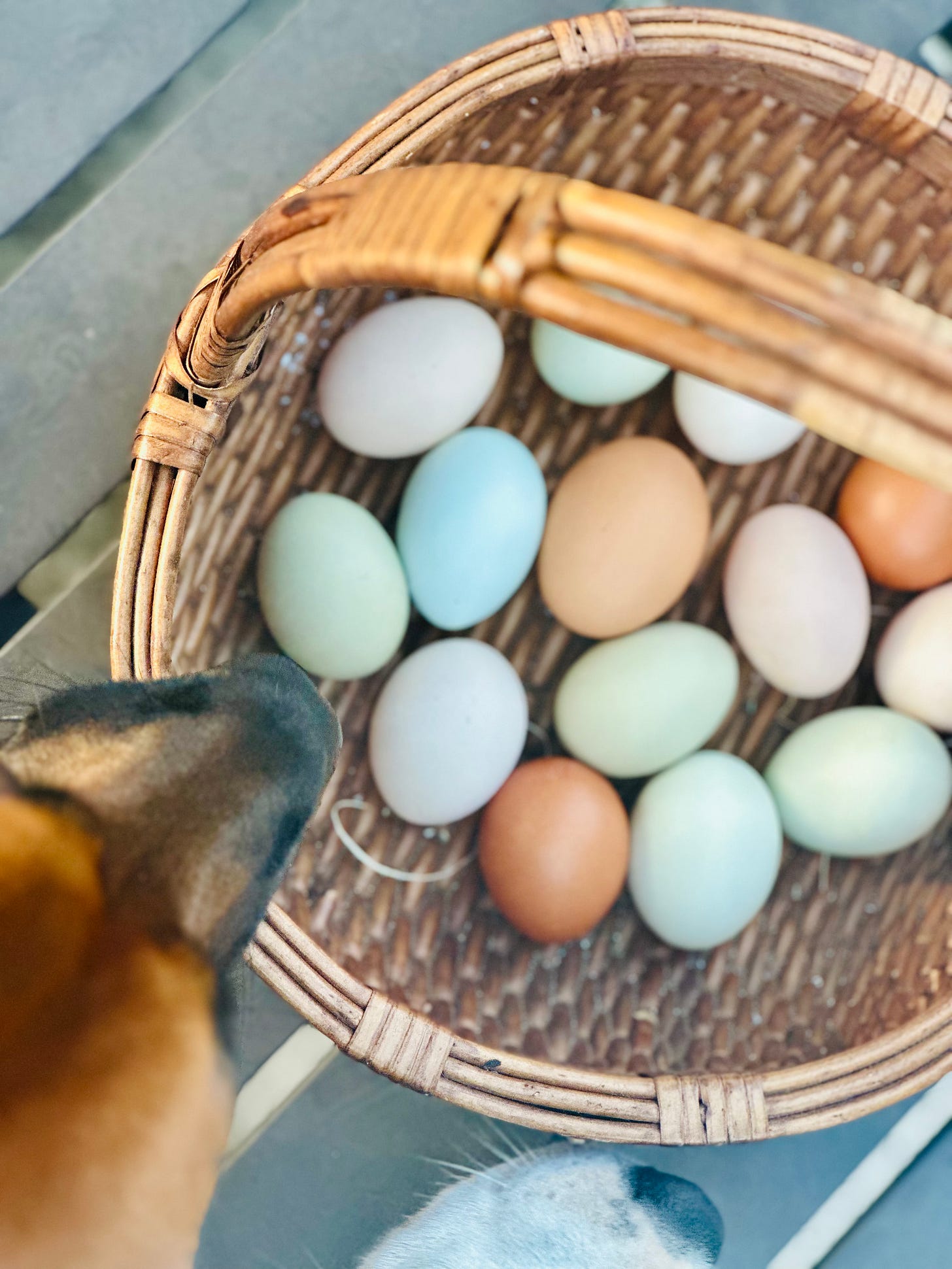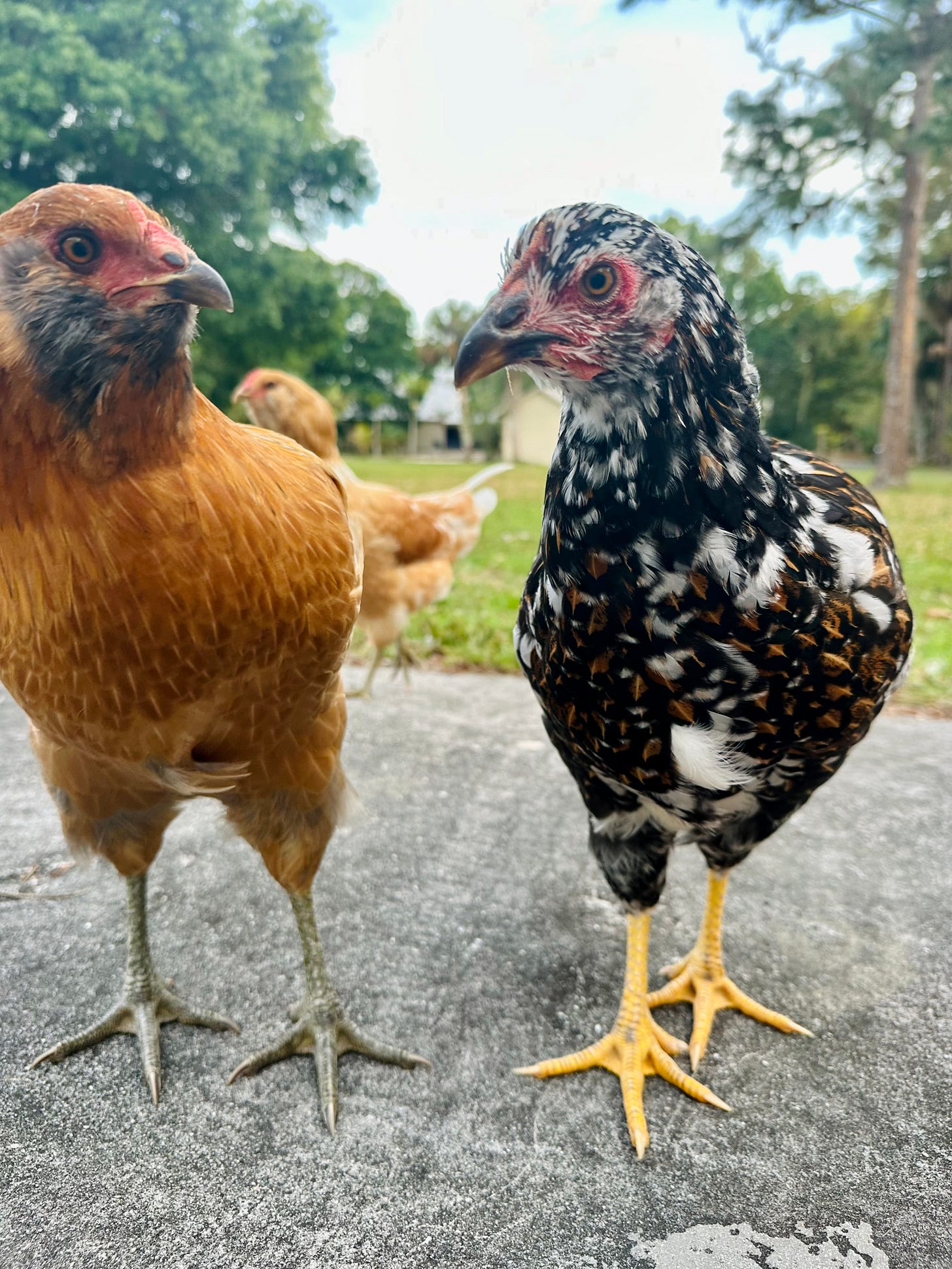The Colorful World of Chicken Eggs
One of the most common questions I get as a homesteader raising chickens is, “Did you go to chicken school?” While this makes me lol, I am by no means a chicken expert – just a passionate chicken mama who loves to learn as much as I can about my fluffy floofs. Here is another common question I get: “Why do some chickens lay different colored eggs?” And, often right after, “Why are store-bought eggs usually all the same color?” Let’s crack into the mystery, shall we?
Why Do Different Chickens Lay Different Colored Eggs?
Have you ever gone out exploring as a child and came upon a bird’s nest with interesting-colored eggs? As a child, I was always outside, roaming the savannah grasslands of Namibia. I discovered that not all bird eggs are the same – that also goes for different chicken breeds.
The color of a chicken’s eggs boils down to genetics. Different breeds of chickens carry unique genetic traits that determine the pigment of their eggshells. The egg’s color is added in the final stage of its formation journey down the reproductive tract, just before the hen lays it.
Here’s a quick look at some common types of chicken breeds and their egg colors:
White Leghorns - white eggs
Rhode Island Reds and Plymouth Rocks - brown eggs
Ameraucanas and Araucanas - blue eggs
Olive Eggers (a hybrid breed) - olive-colored eggs
Green Queens (another hybrid breed) - either green or even creamy white! This depends on the parent birds. It’s all in the genes.
Black Copper Marans - dark red/maroon eggs
Buff Orpingtons: sometimes subtle yellowish or warm-toned brown hue
Sussex: pink eggs
Welsummer: brown speckled eggs
One of my Easter Eggers (left) and Swedish Flower Hens (right)
Let’s get nerdy for a quick sec... The color is produced by pigments like protoporphyrin (for brown) and biliverdin (for blue and green). White eggs are the result of a lack of pigment in the eggshell. Pink(ish) eggs usually come from a translucent cuticle layer (or bloom) deposited over a light-colored or brown eggshell. When this thin cuticle has a slight pigment, it gives the egg a pink or blush tint. Maroon-colored eggs are due to higher concentrations of protoporphyrin layered on a brown or beige base, resulting in a rich, dark color. Yellow(ish) eggs can result from variations in protoporphyrin levels on light-colored shells or due to diet; some yellowish pigments can be subtly influenced by feed (like marigold or corn) but are typically less intense. Some eggs have spots or speckles, caused by uneven layers of protoporphyrin as the egg moves through the reproductive tract. This adds character and can be seen across different color bases.
All eggs start off as white in the shell formation before the pigment is added. And here’s an interesting fact: no matter the shell color, the nutritional content inside is the same! The hen’s diet, health, and environment impact taste and quality, not shell color. It’s what’s inside that counts! That’s why it’s recommended to buy your eggs from a reputable source – like a local farmer.
Why Are Store-Bought Eggs Almost Always White or Brown?
When it comes to the eggs we see in grocery stores, uniformity and efficiency are key factors for large-scale producers. Most of the eggs we find in stores come from breeds like White Leghorns and ISA Browns, known for laying reliable quantities of white and brown eggs, respectively. I have two ISA Browns, and they hardly miss a day!
There’s also a subtle efficiency at play: white egg-laying hens, like White Leghorns, are leaner and require slightly less feed than many brown egg layers. Additionally, uniform eggs are easier to handle and candle. No, I didn’t just make that second word up to make it rhyme... it’s a process to inspect egg quality before they’re sold. But I do like random rhyming and other linguistic phenomena! Anyway, back to the topic... That uniform white or brown color is familiar, easy to market, and practical for producers – but it doesn’t mean it’s the only option!
Why do homesteaders brag about their rainbow-colored eggs?
Every homesteader knows that magical feeling when gathering eggs in varying shades. It’s a small reminder that nature’s creations don’t have to fit in one box! Though selective breeding plays a part, these colorful eggs are a testament to the variety within each hen's breed.
So next time you spot an unusual egg color, you’ll know it’s thanks to the hen’s breed, not any special treatment or artificial coloring.
Got any questions about chickens or chicken keeping? Let me know in the comments below.
A few of my favorites right now (just because):
Book
The Forever Dog Life – Karen Becker
[Amazon Affiliate Link – your purchase supports my recommendations at no additional cost to you.]
I was blown away by the gems in this book! From surprising superfoods to the secret power of eggs (and a lot of valuable info on this topic), it’s a must-read for anyone wanting the best for their fur babies.
Then some non-egg related things:
Song
Trollabundin by Eivor
Ever since a tour guide in Iceland shared this artist with us, it’s become one of my favorites. So, it’s no surprise that this song, tapping into something deep and mystical, features on several of my yoga playlists. The artist isn’t Icelandic but hails from the nearby Faroe Islands. It is hauntingly powerful, with an otherworldly feel. Eivor’s voice is absolutely mesmerizing!
Sleep meditation
Yoga Nidra: Melatonin Magic on the Insight Timer app. Sleep meditations have been a gamechanger in my life, and I love sharing ones that I could fall asleep to every night.





